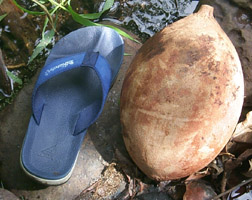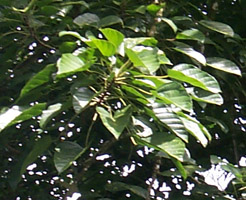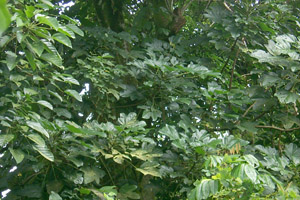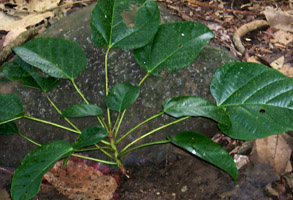









Photos taken in Madolehnihmw near Pohnauleng, Senpehn.
1. Genus:Pangium edule
2.Family:Flacourtiaceae
3.Chuukese name: Durien
4.English name:Football fruit
5.Kosraen name: Unknown
6. Pohnpeian name:Duhrien
7. Yapese name: Unknown
8. Growth form: Tree
9. Growth location: Terretial
10. Growth environment: Forest, the plants likes a slightly acidic place with a little shade to grow.
11. Growth zone: Tropics
12. Average height: often over 40m
13. Stem: woody
14. Leaf arrangement: Alternate, spiral at the end of branch
15. Stipule: absent
16. Petiole: 4inches
17. Leaf blade: cordate, glossy when the tree is mature,usually have fivepoints, it has lines or veins
18. Inflorescence: not closely observed
19. Floral bracts:not available when picture taken
20. Flower:Large and greenish(some say it is white, blooms like the papaya flower)
21. Calyx:not observed
22. Corolla:not observed
23. Stamens:not observed
24. Ovary:not observed
25. Style:not available for observation
26. Fruit: Size and shape of a football,exterior color is brown and rough to the touch, inner skin is pale-yellow to white. The plant grows rapidly in the initial years and can bear fruit after 10-15 years depending on the soil type.
27. Seed: Flat and grayish-brown, ~2inches long, and very poisonous
28. Anything else: The leaves and other parts of the tree contains poison. The flesh of the fruit has a strong aroma and some people compare to smell and taste of durian. The fruit is normally eaten when the skin is soft to the touch.
29.Cultural usage: The fruits are bat and rat food, it is edible to humans, and it is also a good food for bigs. It also has some medical uses.
Collected by: Loveleen James, Fall 2000.